Seeds & Spice: The Abundance of Herbs
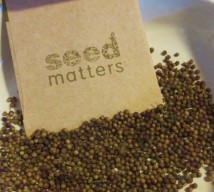 By Jill Henderson – Show Me Oz –
By Jill Henderson – Show Me Oz –
If you grow herbs in your garden for seasoning food, then you already know how easy and rewarding they can be. After all, herbs season and preserve food and can be used for medicinal purposes, as well. But did you know that many common herbs also produce spice in the form of fruits or seeds? These seeds are not only flavorful and medicinal, but they can also be used to start more herbs in the spring, as well.
Seeds are the Spice of Life
Almost all of the herbs grown in the home garden produce seed as a means of reproduction. That being said, most of them are grown for their leaves and after the harvest is complete, the plants are pulled out of the ground. But if you’re interested in seed, the plant must be left with enough leaves and stems so that it can continue to grow, reach maturity and flower.
With herbs such as cilantro, the leafy stems are cut in early spring just as flowering stalks are beginning to form and then allowed to regenerate new growth. By early summer, the plants will begin to flower and a few short weeks later, the seed will be ready to harvest.
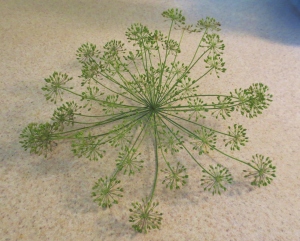 Herbs present their seeds in many different ways: varying multiples of one to dozens, in large clusters or heads, or even in pods like green beans. Depending on the herb, seeds can ripen all at once, one at a time, or in a large group over a very short period of time.
Herbs present their seeds in many different ways: varying multiples of one to dozens, in large clusters or heads, or even in pods like green beans. Depending on the herb, seeds can ripen all at once, one at a time, or in a large group over a very short period of time.
Almost all seeds start out green and turn shades of gray-green, tan, brown, gold, or black as they mature. Regardless of how they are presented or mature, one thing is very important when collecting seeds: Harvest them before they fall off, or “shatter”, on their own.
For seeds that present themselves in clusters such as anise, caraway, cumin, and Sweet Cicely, allow several of the seeds in the cluster to begin turning before snipping off the entire head into a paper bag where the seeds can continue to ripen and dry completely. As other heads begin to turn, they too can be added to the bag until the harvest is complete.
Herbs such as fenugreek, sesame and black cumin are borne in seed pods. The pods of these herbs should be allowed to dry on the plant until the seeds can be heard rattling inside. Once dry, they are shelled and allowed to finish drying on screens or trays.
The pods of sesame are the exception to the rule. This herb has a keen sense of self-propagation and when the pods fully ripen they burst. This mini-explosion propels the seeds away from the mother plant to start new colonies. Although quite fascinating to watch, it’s a good idea to collect sesame pods just as they begin to turn brown, keeping them in a paper bag until they shatter.
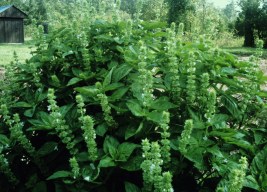 Some herbs don’t ripen their seeds all at once, but rather spit them out in fits over an extended period of time. This generally is true of herbs such as basil, mint, lemon balm, oregano, and marjoram (all mint family members) that present their flowers in whorls, spikes, or loose panicles. These seeds must be checked and picked daily and dried further before being stored, if necessary. To collect these kinds of seeds, it is easy enough to go around to each flower cluster with a bowl or open paper bag and shake the flowering stem into it. The ripe seeds fall out easily and can then be stored.
Some herbs don’t ripen their seeds all at once, but rather spit them out in fits over an extended period of time. This generally is true of herbs such as basil, mint, lemon balm, oregano, and marjoram (all mint family members) that present their flowers in whorls, spikes, or loose panicles. These seeds must be checked and picked daily and dried further before being stored, if necessary. To collect these kinds of seeds, it is easy enough to go around to each flower cluster with a bowl or open paper bag and shake the flowering stem into it. The ripe seeds fall out easily and can then be stored.
Stratification and Winter Sowing
Many herbs are said to self-sow, which basically means that they can – and will – propagate a new generation of plants every year by the seeds that they produce without any human intervention. This can be a very good thing, or a big headache, depending on your preferences.
In general, herbs that easily self-sow also produce seedlings that are stronger, germinate earlier, and produce better than those sown by hand in spring. This is especially true for herbs in the parsley family, which do not transplant well.
Stratification is a process in which seeds are exposed to moist, cold conditions for anywhere between six weeks and several months. This process, which mimics outdoor winter conditions, breaks the seeds’ natural dormancy. Most herbs don’t necessarily need stratification, but they do benefit from it in many ways and that’s where winter sowing comes in.
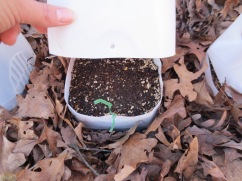 Winter sowing is the practice of planting herb seeds in late fall or early winter so that natural stratification can take place. As mentioned, most herb seeds do not need this process, but many benefit from it nonetheless.
Winter sowing is the practice of planting herb seeds in late fall or early winter so that natural stratification can take place. As mentioned, most herb seeds do not need this process, but many benefit from it nonetheless.
Herbs in the parsley family—such as dill, fennel, chives, black cumin, and caraway—often germinate earlier and grow stronger than seeds sown in the spring or those sown indoors and transplanted to the garden later. These particular herbs do not transplant well, but others, such as basil, marjoram, chives and others do exceptionally well when winter sown in containers. Read more about winter sowing in my article: Winter Sowing: Get a Jump on Spring.
Harvesting and Storing Seed for Sowing
All seeds have a finite lifespan, but by properly cleaning, drying and storing them, the home gardener can preserve the quality of herb seeds used for spice and increase the germination rates for herb seed intended for sowing.
The first step to ensuring the quality of your seeds is to dry them completely before storing. Seeds that are not dried and stored properly will not achieve true dormancy and will continue to respire, or breathe, exhausting energy that the seed needs to germinate and sustain early growth.
Most seeds dried at room-temperature will have a moisture content of 10%-20%. At these levels, seeds that are packaged in glass or plastic can rot, mold or germinate. At the very least, seeds with a high moisture content will rapidly decrease in rate of germination. Spices that are not dried properly can quickly lose their flavor. Seeds should never be dried in the oven, dehydrator, microwave, or in direct sun, as high temperatures can kill the embryo within.
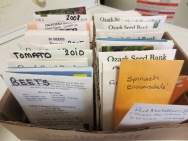 Room-dried seeds should be wrapped in acid-free paper packets, which can then be grouped into a large rigid box and stored in a dark, cool area such as in a pantry or closet. Stored this way, most seeds should maintain at least 50% germination rates for several years.
Room-dried seeds should be wrapped in acid-free paper packets, which can then be grouped into a large rigid box and stored in a dark, cool area such as in a pantry or closet. Stored this way, most seeds should maintain at least 50% germination rates for several years.
Though many people do it, I don’t generally recommend keeping seeds in the freezer or refrigerator. There’s just too many things that can go wrong in that environment. The most common problem is condensation.
When a very cold container is brought into room temperature, condensation forms on the outside. If the container is opened when cold, the condensation will also form on the inside. Therefore, if you choose to use the freezer or refrigerator to store seeds in, take special care to allow all containers to come to room temperature before opening them. Otherwise, your seeds could be coated with moisture and rot or mold in storage.
With these basics, saving the seeds of your favorite herbs will be a snap and in no time, you will have an abundance of herb and spice to eat, grow and enjoy!
Happy Gardening!
© 2013 Jill Henderson
Whether you’re a weekend gardener, homesteader, or serious survivalist, saving seeds is a money saving skill that every green-thumb should to have. An excellent resource for beginners and experienced gardeners alike, The Garden Seed Saving Guide takes you step-by-step through every aspect of saving seeds. If you want to save money, become more self-sufficient and avoid genetically modified food crops, The Garden Seed Saving Guide is for you. Available in the Show Me Oz Bookstore
Jill Henderson is an artist, author, and the editor of Show Me Oz . Her books,The Healing Power of Kitchen Herbs, The Garden Seed Saving Guide and A Journey of Seasons can be found in the Show Me Oz Bookstore. Jill’s work has also appeared in The Permaculture Activist, The Essential Herbal, Acres USA,and Llewellyn’s Herbal Almanac.



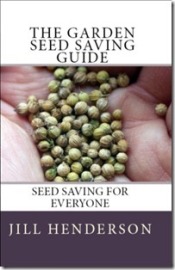
No comments:
Post a Comment